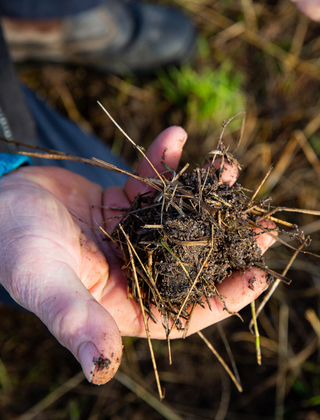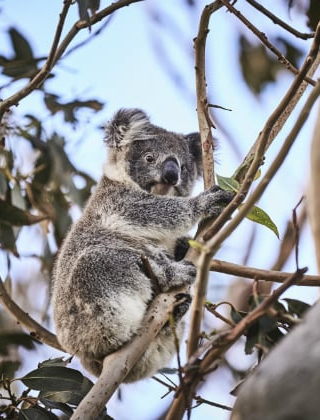Richard Daugherty, ‘Balala’, New England

Richard Daugherty and Sarah Burrows run a self-replacing Merino flock and Dohne fat lamb enterprise at Balala with regenerative and holistic management.
Location: Northern Tablelands of New South Wales
Property size: 1215 Hectares
Climate: Predominantly a summer rainfall
Rainfall: Region averaging 795 mm
Vegetation: Creeks flats going into Yellow Box grassy woodland
Merino sheep: Self-replacing super fine non-mulesed Merino flock
Merino wool: Average 16.5 micron bright stylish wool
Balala Station was established in 1839 and is one of the first, if not first, wool-growing properties to be settled in the New England region of New South Wales.
Owned and operated by Richard Daugherty and Sarah Burrows, a self-replacing Merino flock and Dohne fat lamb enterprise is run at Balala with regenerative and holistic management.
Starting out in regenerative agriculture
Richard Daugherty and Sarah Burrows purchased Balala in 2011 and finding much of the land degraded, they embarked on repairing the degradation of the land through holistic farming practices. First focusing on ground-cover, they implemented planned grazing rotations to allow perennial grasses to be deep rooted and healthy and fenced off riparian areas to support the water cycle.
“The mineral, nutrient, water cycles are fundamental to the success of our ecosystem. We continually look at where the weak links are in our operation so that these can all be maximise and our operation is not effecting any or all of them,” explains Daugherty.
“One of the first undertakings was too fence off the riparian areas. We are now focusing on keeping the water for longer higher up in the landscapes and establishing nutrient sinks in this higher landscape to feed the system lower down through the nutrient and mineral cycle.
“We focus on soil health, understanding and appreciating that soil is a living thing. We do regular soil tests and are now setting up monitoring sites to see how operations are changing infiltration, tilth, compaction, density and biodiversity of species.”
Richard, originally from South Africa, has a long-held interest in the working of nature. “Natural History has always been a part of my life.
“I have always had a deep founded understanding respect and empathy for nature and when we decided to leave South Africa and come farming in Australia my goal has been to do everything possible to farm holistically and with nature.”

Focusing on the natural capital
Running a self-replacing flock of 2500 Merinos and 700 Dohne ewes joined to Dohne and White Suffolk rams, Richard and Sarah have worked to integrate holistic farming practices into their land and business.
“It has been an interesting period and starting with a property that was extremely run down has been a challenge but one we decided to take up,” said Daugherty.
“With a limited capital base we divided up areas into 10 hectare paddocks, fenced off riparian areas, put in water infrastructure as a start. We picked the low hanging fruits first, settled debt and then the infrastructure capital outlays.
“Being new to the sheep industry, it was a very rich, self-rewarding feeling when we achieved the top five auction price for our two-tooth clip and third nationally in the same week a few years ago. Gives one hope that one is on the right path.”
“I believe that focusing on the landscape as being pivotal in our business,” said Daugherty.
“The other thing being to not view soil as dirt but a living thing. So from this the regenerative practises we undertake on the farm are all based around these two focuses.”
Focusing on increasing the organic matter in the soil, the water infiltration, relieving soil compaction and increasing the biodiversity of species in the soil are some of the practices that have been undertaken on Balala in the past nine years.
“I have tried and will continue to achieve a liquid carbon pathway in native pastures by inter-cover cropping to address limiting resource restrictions like compaction, organic matter, nitrogen fixing etc by planting mixes that suite,” says Daugherty.
“We concentrate on resting paddocks so that perennial species can restore energy reserves in their roots going down deeper and thereby having symbiotic relationships with fungi and bacteria to access minerals that the plant requires.”
“I have been focused on learning about soils and William Albrecht was one scientist that fitted in with my way of thinking. We have initiated a program to try balancing some paddocks but lime is as Albrecht says 'the trucker of all', so when the season changes we will be addressing liming and also chicken manure spreading.”

Drought causing a tipping point
“It is very difficult now due to this incredible 100-year drought we are in and trying to manage out of it with financial commitments is very testing,” says Daugherty.
“The fundamentals of rainfall use, kilograms of dry matter, humus litter on the soil surface, minimising run off, understanding brittle and non-brittle environments and how they are managed differently all lead to taking up regenerative practises that address what may be limiting.”
Science, especially peer reviewed science, is a known key driver for the uptake and acceptance of practices, but as Daugherty also understands, human beings are prone to reject change that are outliers until such time as the uptake of practice reaches a tipping percentage through numbers and then it becomes acceptable.
“Regenerative agriculture is at that tipping point,” says Daugherty. “Regenerative agriculture as a concept, is an area that has grown internationally so quickly over the last decade after years of being shunned.
“Science is very important in justifying and making regenerative agriculture acceptable but personally, I do it because there is an energy, a connection with nature that grounds me to the earth and when experiencing a functioning ecosystem, I don't need science to validate it for me.”
Daugherty says that soil is a classic example and recently, with quorum sensing and developments in fungi and bacteria relationships, new things are being learnt.
“I realise how fundamental science is to the continued uptake of regenerative agriculture and believe that through collaboration with universities and grassroots organisations like Landcare, Soils For Life and many others doing projects, testing, monitoring, the science works for general acceptance of regenerative agriculture practices.”
Involved in many community and agricultural initiatives, Daugherty and Burrows understand the importance of community and utilising experts in the field and are involved in a variety of initiatives including Landcare, NSW Farmers Federation, the Merino Lifetime Ewe Project and the Endangered Bells Turtle Project.

Reducing input, increasing profit margin
As Daugherty points out, a limiting factor as a producer is that the industry is structured in a way that means woolgrowers are price takers. There are situations where this is not the case, for example with the 'Paddock to Plate' movement or bringing terms of trade back to the farm, but generally, as primary producers woolgrowers must accept the price offered by the market demand.
“The one area where we have influence over is from the input side,” explains Daugherty.
“Reducing inputs is directly correspondent to affecting the bottom line.”
To achieve rest for the grasses, Daugherty runs the stock under high density stocking rates. This allows for an increase in DSE over time whilst also assisting the soil in balancing base saturation percentages and addressing the most limiting mineral needs.
Like most farms across New South Wales, moisture at the present time is the most limiting factor but by focusing on increasing organic matter in the soil, future rainfall will be maximised through enhanced infiltration.
By utilising and enhancing the natural resources on Balala, Daugherty is able to reduce input costs which will in turn affect the profit margins when wool and stock are sold.
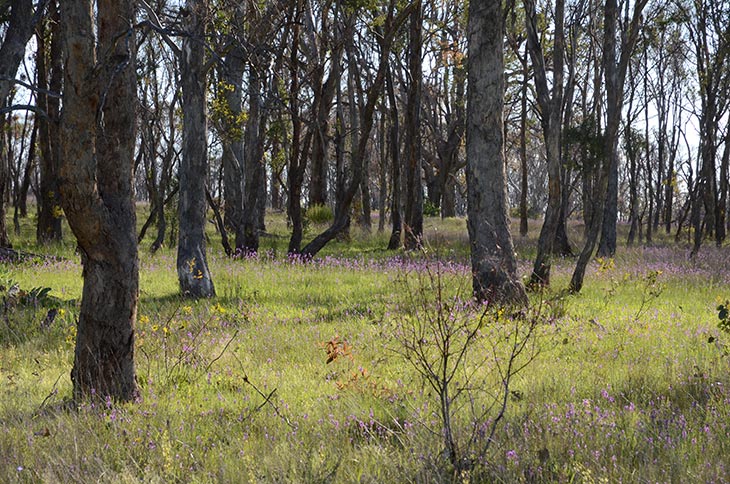
Benefits of biodiversity
“We’ve seen an abundance of wildlife come back to Balala over the years due to our management practices,” says Balala. “Wildlife such as koalas, echidnas, platypi and birds, it’s great to see that the landscape is alive. The insects are abundant and diverse and this creates a positive energy.”
Remanent trees are also getting regrowth around them and that undergrowth is fantastic for the native wildlife as well as the future of the land.
To measure biodiversity gains, Balala is involved with Elephants in The Woodland to undertake biodiversity reports on various locations.
“We’re also involved in the National Environment Science Programme (NESP) undertaken by Sue Ogilvy,” explains Daugherty. “The research has highlighted that grazing for better profitability, biodiversity and wellbeing is certainly possible.
“Our aim is to achieve a property where there is a Pyramid of Life functioning and trophic levels are all working together - solar use, water cycles, nutrient cycles, soil cycles, mineral cycles.
“Being involved in an operation like this on a small parcel of land gives one a sense of pride,” says Daugherty.
Breeding resilient, profitable Merino sheep
“The focus of the breeding objectives for the Balala Merino flock has been around a plainer bodied non-mulesed, high fecundity and good growth type of sheep.
“Recently I have been focusing on a sheep with a higher fat level and eye muscle depth, I know that there are negative correlations with other objectives like fibre diameter and fleece weight but as with the Dohnes they are just a better doing sheep,” explains Daugherty.
“We would like to try and achieve this “better doing” trait with the Merinos whilst not being hugely negatively affected with the fleece compromise. I understand the Dohne is a dual-purpose sheep with a far stronger focus on growth per their index but the gloriousness of natural wool fibre is the driver in maintaining a super fine Merino flock. The Dohne's expand the enterprise mix, rather than going down the first-cross, second-cross route.”
“I strongly believe genetics is a huge advantage and have been using ASBV's from the start for rams selected,” explains Daugherty.
“Ram Select is a brilliant tool especially using the Ram Team function and how one is tracking. I have also done a DNA Flock profile for our Merinos which was about four years ago and will be doing another in a year or two, to track performance.”
One of the crucial focuses for Balala is animal welfare and achieving a non-mulesed position.
“In our operation we focus on selecting out animals that get either breach or body fly struck. They then are classed out or are joined too Terminals and get treated for their disposition should the season present itself,” says Daugherty.
“All our ewes have EID’s and measuring their performance allows one the objective of indexing better performing individuals.
“Courses offered like Managing Weaners, Ramping up Ram Power, Bred Well Fed Well are fantastic opportunities to have been offered by the industry to better oneself in our operation,” explains Daugherty.
“This year we will be looking at whether there is an option of shearing the wethers on a 9-month rotation and how this effects their performance, wool quality, fibre strength etc.
Drenching is still required at Balala but to a lessening extent. This lessening is due to two major factors. The first is the focus on breeding Merino sheep with a resilience to parasites. The second is the planned rotational grazing system which ensures the rest periods for the paddocks breaks the parasites cycle.
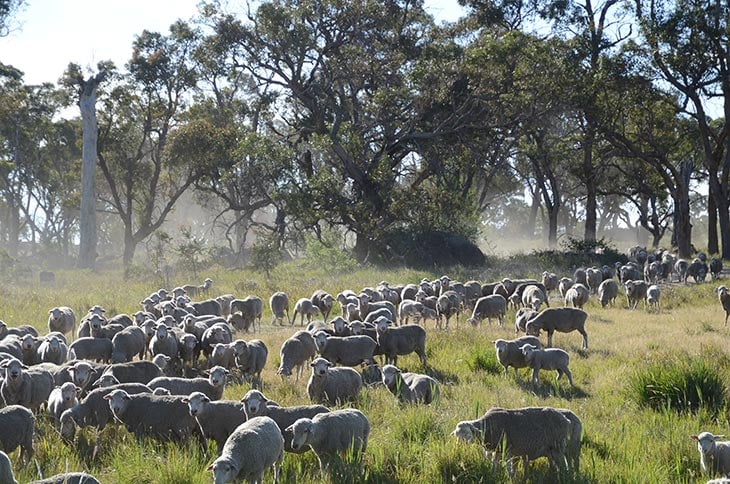
Managing sheep holistically
After undertaking the Life Time Ewe Management course, Daugherty and Burrows understood the importance of the need to condition score animals.
“We aim to run our ewes at condition score (CS) 3 and this entails supplementing the energy requirement of feed during our feed gap in winter,” explains Daughtery.
“We have changed our lambing to when the natural cycle of animals in our locality would be, so lambing is from October for five weeks. Ewes are aimed to be in CS 3.5 at lambing.
“Our ewes are preg. tested into dry, single and twins and managed accordingly prior to lambing.
“In a normal season all drys would be sold but this season hasn't been their fault and they will be run as wethers (CS 2.5) until next season,” explains Daugherty.
Through planned grazing management, Balala works to have enough feed in lambing paddocks for long enough to have the feed base for ewes to lamb in. Due to drought this has been difficult according to Daugherty and they have had to feed during lambing.
Supplementary minerals and trace elements are given to the sheep, they are vaccinated with 6 in 1 annually, as well as B12, Selenium and the flock is on a BarberVax program.
The mob is FEC tested before drenching and a liver fluke program consists of a drench in April and August. Recently, Balala undertook a liver fluke drench resistance test towards Triclabendazole which highlighted a resistance.
2019 marked the first year that at lamb marking Balala used Numnuts and have applied to be apart of the Numnut research program to gain further insights into its application and benefits.
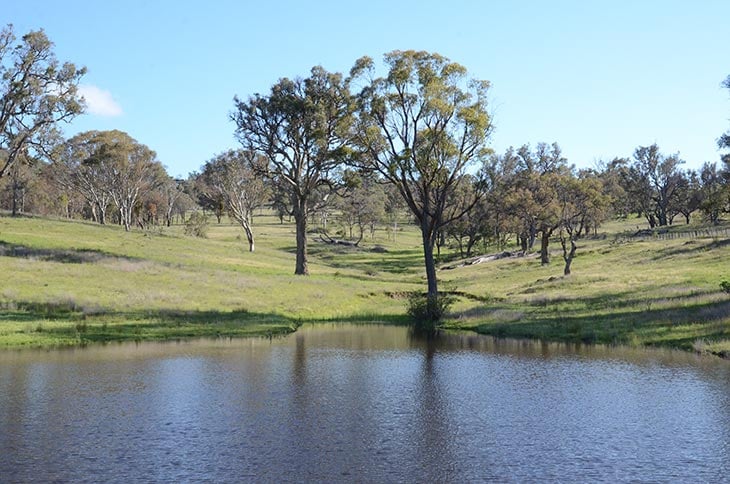
Future of growing wool in Australia
“I am very positive about the future of the Australian wool market in Australia,” says Daugherty.
“I believe that as growers move towards a more modern next generation Merino, the industry will be more efficient and the returns per area of production will strengthen the industry.
“Collaboration between the industries parties is getting stronger and working as a unified industry we will be able to overcome some of the hurdles in place like strengthening our International market, the mulesing issue, wild dogs and attracting people back into the sheep industry. I think is all economically driven.
“With seasonal conditions the way they have been there are many growers that skewed their ratios more towards cattle and have now realised and moved back to a stronger sheep percentage of their carrying capacities. The challenge ahead is increasing our national flock numbers to an economic critical mass that positions us as the world’s largest wool producer.”
For more information, view the Soils For Life Balala Station case study here https://soilsforlife.org.au/balala-station/







